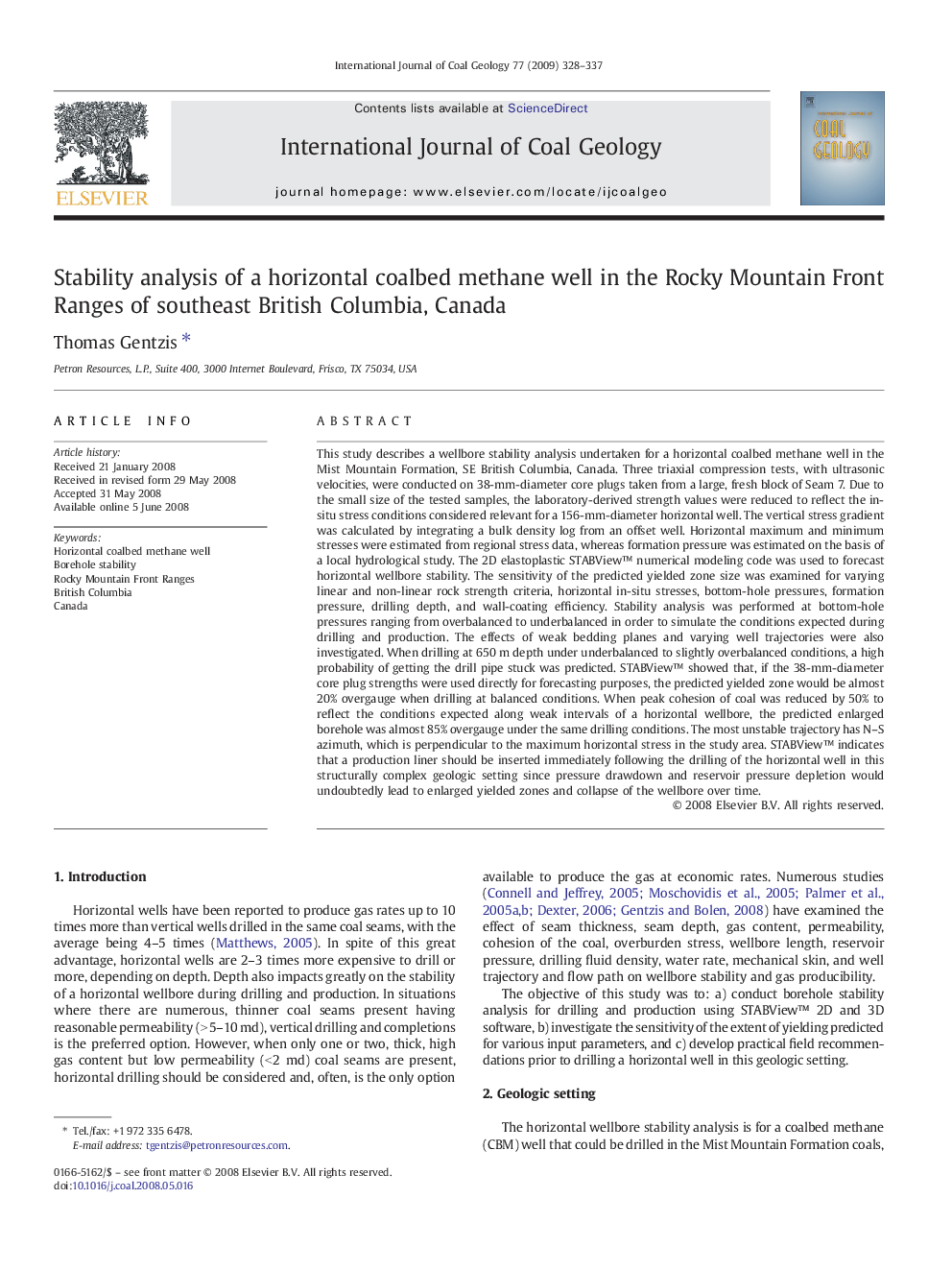| کد مقاله | کد نشریه | سال انتشار | مقاله انگلیسی | نسخه تمام متن |
|---|---|---|---|---|
| 1754093 | 1522638 | 2009 | 10 صفحه PDF | دانلود رایگان |

This study describes a wellbore stability analysis undertaken for a horizontal coalbed methane well in the Mist Mountain Formation, SE British Columbia, Canada. Three triaxial compression tests, with ultrasonic velocities, were conducted on 38-mm-diameter core plugs taken from a large, fresh block of Seam 7. Due to the small size of the tested samples, the laboratory-derived strength values were reduced to reflect the in-situ stress conditions considered relevant for a 156-mm-diameter horizontal well. The vertical stress gradient was calculated by integrating a bulk density log from an offset well. Horizontal maximum and minimum stresses were estimated from regional stress data, whereas formation pressure was estimated on the basis of a local hydrological study. The 2D elastoplastic STABView™ numerical modeling code was used to forecast horizontal wellbore stability. The sensitivity of the predicted yielded zone size was examined for varying linear and non-linear rock strength criteria, horizontal in-situ stresses, bottom-hole pressures, formation pressure, drilling depth, and wall-coating efficiency. Stability analysis was performed at bottom-hole pressures ranging from overbalanced to underbalanced in order to simulate the conditions expected during drilling and production. The effects of weak bedding planes and varying well trajectories were also investigated. When drilling at 650 m depth under underbalanced to slightly overbalanced conditions, a high probability of getting the drill pipe stuck was predicted. STABView™ showed that, if the 38-mm-diameter core plug strengths were used directly for forecasting purposes, the predicted yielded zone would be almost 20% overgauge when drilling at balanced conditions. When peak cohesion of coal was reduced by 50% to reflect the conditions expected along weak intervals of a horizontal wellbore, the predicted enlarged borehole was almost 85% overgauge under the same drilling conditions. The most unstable trajectory has N–S azimuth, which is perpendicular to the maximum horizontal stress in the study area. STABView™ indicates that a production liner should be inserted immediately following the drilling of the horizontal well in this structurally complex geologic setting since pressure drawdown and reservoir pressure depletion would undoubtedly lead to enlarged yielded zones and collapse of the wellbore over time.
Journal: International Journal of Coal Geology - Volume 77, Issues 3–4, 31 January 2009, Pages 328–337